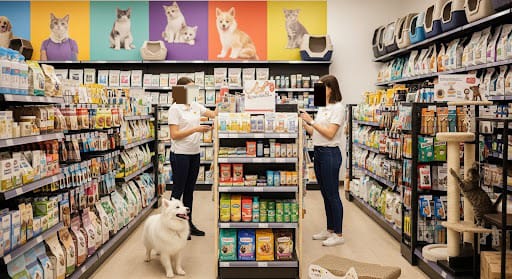Discover pricing strategies and supplier relationships that offer stability in an unstable market.
With inflation reshaping the entire pet food industry, independent pet retailers are feeling the squeeze. Wholesale raw dog food costs are on the rise, inventory is harder to predict, and many suppliers struggle to maintain quality at scale.
Still, there are ways to stay competitive without sacrificing your margins—or your reputation. By re-evaluating how and where you source your products, you can manage overhead more effectively and give your customers the quality they demand at prices they’ll accept.
Navigating Price Volatility in the Raw Pet Food Supply Chain
Over the past few years, raw dog food costs have surged due to shipping delays, packaging shortages, and inconsistent ingredient supply. Tariffs on imported goods and rising labor costs in North America have only added to the problem.
Retailers that rely on a single supplier or short-term contracts are particularly vulnerable. As wholesale costs shift monthly (sometimes weekly), profit margins evaporate. Establishing long-term partnerships with reliable suppliers offering stable, tiered pricing can reduce your exposure to cost spikes.
Working with providers that specialize in dog food wholesale and cater specifically to Canadian retailers also helps. Local sourcing reduces logistical risks while offering fresher product turnover.
Evaluating Quality Without Driving Up Costs
Cutting costs can’t come at the expense of food quality. That’s where many pet stores run into trouble: the cheapest products are often the least digestible, poorly formulated, or inconsistent in composition. That leads to high return rates and diminished customer trust.
Instead of defaulting to the lowest bidder, look for suppliers who:
- Offer clear protein labeling (e.g., single-source meats)
- Maintain consistency in formulations
- Provide nutrient analysis or third-party verification
Not all raw foods are created equal. Choosing partners who offer nutritionally complete, well-balanced products means you spend less time handling complaints and more time growing your customer base.
Streamlining Inventory With Predictable Ordering Models
Inventory planning becomes unpredictable when suppliers change prices or availability without notice. Retailers end up overstocking to hedge against delays—or understocking to avoid risk—both of which lead to lost sales.
A better approach is to establish recurring bulk order agreements where pricing is locked for a set term. This not only creates cost predictability but also helps you schedule promotions and build customer trust.
Ask whether your wholesale partner can:
- Set fixed pricing tiers based on volume
- Provide local warehousing or scheduled drop-offs
- Allow partial restocking instead of full case minimums
If your partner doesn’t offer those benefits, it might be time to reassess who you’re buying from.
Reducing Risk With Flexible Starter Options
Digestive sensitivity is one of the top reasons customers abandon raw diets. When a dog refuses the food—or gets sick from it—customers blame the product or the store. Refunds become common, and shelf space is wasted.
Suppliers who provide starter packs, trial formulas, or transition plans allow you to introduce customers to raw diets without overcommitting on inventory. This limits your financial exposure while improving customer satisfaction.
Additionally, using raw food options that have been pathogen-tested and nutritionally balanced increases the likelihood of long-term repeat purchases.
Additional Resources
For Canadian retailers seeking reliable raw food options, explore more about Raw dog food products designed with quality, consistency, and affordability in mind.
- Public Health Agency of Canada – Salmonella & Raw Pet Food
- AAFCO – Nutritional Standards for Pet Food
- Wholesale Raw Dog Food: High-Quality, Cost-Effective Solutions for Pet Stores in Canada | All Raw Dog Food





























